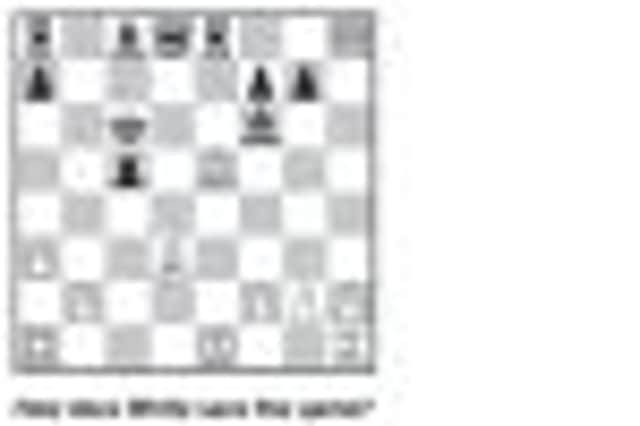Chess - The Scotsman 19/04/2012


DRAWS don’t have to be dull; many have proved more appealing than wins. Except for short grandmaster draws, most occur only after both sides have exhausted all their mutual opportunities.
Yet there are varied reasons to draw, such as shortage of time or fear of losing. At the 1958 Interzonal, Soviet grandmaster Yuri Averbach accepted a draw offer from 15-year-old Bobby Fischer in a wild game that could have gone either way. Fischer later said: “I was afraid of losing to a Russian grandmaster, and he was afraid of losing to a kid.”
Advertisement
Hide AdAdvertisement
Hide AdEven back in the 1920s, Jose Raul Capablanca and Emanuel Lasker decried the death of chess by draws. The game, they declared, was just about played-out between evenly matched opponents due to the developments in opening theory. The two world champions even went as far as suggesting radical changes, such as increasing the size of the board to 10 x 10 and introducing more pieces.
The fighting spirit of a truly remarkable draw could not be better illustrated than during the recent Russian Team Championship in Sochi, as two famous elite-status Russians, Peter Svidler and Alexander Morozevich, turned in what could be described as “The Draw of the Century”.
Morozevich’s reputation as one of the most imaginative tacticians among the Top 10 GMs was boosted with his opening innovation 11...dxe4!? that opened a pandora’s box of complications, with a mindboggling series of “only” moves by both sides, which, to his credit, Svidler managed to defuse over the board.
P Svidler - A Morozevich
Russian Team Ch., (5)
Queen’s Gambit Declined
1 Nf3 Nf6 2 c4 e6 3 Nc3 d5 4 d4 Be7 5 Bf4 0–0 6 a3 b6 7 cxd5 Nxd5 8 Nxd5 exd5 9 Qc2 c5 10 dxc5 bxc5 11 e4 dxe4 12 Qxe4 Re8 13 Bd3 Bf6 14 Ne5 Nc6 15 Qxh7+ Kf8 16 Qh8+ Ke7 17 Nxc6+ Kd7+ 18 Be5 Kxc6 19 0–0–0!! Bxe5 20 Be4+ Kc7 21 Rxd8 Rxh8 22 Rxh8 Bf4+ 23 Kc2 Bb7 24 Bxb7 Rxh8 25 Bd5 Rd8 26 Rd1 Bxh2 27 Bxf7 Rf8 28 Bd5 Rxf2+ 29 Rd2 Rxd2+ 30 Kxd2 Be5 31 b3 Bf6 draw agreed